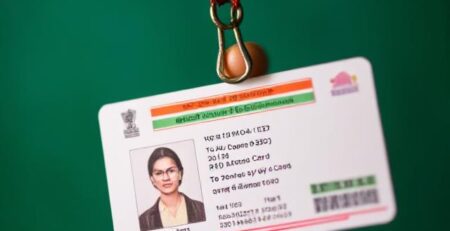The End of an Era: India Post Discontinues Registered Post Service After Five Decades of Trusted Communication
In a landmark decision that marks the end of a beloved communication era, India Post has formally announced the discontinuation of its iconic registered post service effective September 1, 2025, ending over 50 years of trusted and reliable postal communication. This significant move represents one of the most substantial changes in India’s postal history, affecting millions of citizens who have relied on this affordable and secure mail service for decades.
The registered post service, which has been synonymous with official correspondence, legal documentation, and secure communication, will be permanently merged with Speed Post as part of India Post’s comprehensive modernization strategy. The Department of Posts is set to merge registered post features into Speed Post, creating a faster, more secure mail service while moving toward modernizing delivery with global standards.
Understanding the Historical Significance of Registered Post Service
The Legacy of Five Decades
For over half a century, the registered post service has served as the backbone of India’s formal communication system. Registered post was considered a cheap, safe and legally valid medium for decades, making it an indispensable tool for government offices, legal firms, educational institutions, and individual citizens across the nation.
The service gained particular prominence due to its unique combination of affordability, reliability, and legal validity. Unlike ordinary mail, registered post provided recipients with proof of delivery, making it legally admissible in courts and essential for official communications. This feature made it the preferred choice for sending important documents, legal notices, employment letters, and other critical correspondence.
Trusted Communication Channel
The registered post service became deeply embedded in India’s administrative and legal framework. Government departments relied heavily on this service for official notifications, tax notices, and citizen communications. Legal professionals used it extensively for serving notices, submitting documents to courts, and maintaining proper documentation trails required by law.
Educational institutions, particularly universities and competitive examination boards, utilized registered post for sending admit cards, result notifications, and important announcements to students across the country. The service’s widespread acceptance and legal recognition made it an integral part of India’s communication infrastructure.
Reasons Behind the Discontinuation Decision
Declining Usage Statistics
According to official data, there was a 25 per cent drop from 24.2 crore in 2011-12 to 18.46 crore in 2019-20. This substantial decline reflects changing communication preferences and the impact of digital transformation on traditional postal services.
In 2011-12, India Post was handling 244 million registered posts. By 2019-20, that figure dropped to 184 million… that’s a 25% decline. These statistics clearly demonstrate the reduced demand for traditional registered post services as users increasingly adopt digital alternatives.
Impact of Digital Communication Revolution
The decision comes after a consistent drop in Registered Post usage over the years, largely due to the growth of digital communication and competition from private courier and e-commerce logistics services. The proliferation of email, WhatsApp, digital document sharing, and online communication platforms has significantly reduced dependency on traditional postal services.
The rise of digital India initiatives, e-governance platforms, and online service delivery has further accelerated this shift. Government departments now increasingly use digital channels for citizen communication, reducing their reliance on physical mail services.
Competition from Private Courier Services
The drop has been largely driven by the rise of digital communication and increasing competition from private courier services and e-commerce delivery networks. Private courier companies offering faster delivery, real-time tracking, and competitive pricing have captured significant market share from traditional postal services.
E-commerce giants have revolutionized logistics and delivery expectations, with customers now expecting same-day or next-day delivery options. This shift in consumer expectations has made the traditional registered post service appear slow and outdated in comparison.
The Merger with Speed Post: What Changes
Operational Integration Strategy
The circular, dated July 2, said the reason behind the major change is an aim to make the mail service more streamlined and “deliver greater customer convenience by consolidating similar services under a unified framework.” This integration represents a strategic move to eliminate redundancy and improve operational efficiency.
The merger of Registered Post with Speed Post is part of a broader initiative to simplify mail services and eliminate overlapping features that previously caused operational inefficiencies. By combining these services, India Post aims to create a more cohesive and efficient postal system.
Service Consolidation Benefits
The merger will bring together the best features of both services. Customers will benefit from the speed and tracking capabilities of Speed Post while retaining the legal validity and security features that made registered post popular. This consolidation eliminates confusion between similar services and provides a single, comprehensive solution for secure mail delivery.
Despite headlines suggesting a closure, the postal department insists that Registered Post is not being discontinued altogether. Instead, its functionality will be folded into Speed Post. This clarification helps address concerns about the complete elimination of registered post features.
Impact on Different Stakeholders
Government and Administrative Bodies
Government departments across all levels will need to update their operational procedures and documentation systems. Government offices, legal firms, and recruitment boards will also need to update their systems and terminology. India Post has already started removing the term “Registered Post” from official documents, with a full update expected by July 31, 2025.
This transition requires comprehensive training programs for government employees who have relied on registered post services for decades. Administrative procedures, forms, and official communications will need revision to reflect the new Speed Post-integrated system.
Legal and Judicial System
The legal fraternity, which has extensively used registered post for serving notices and maintaining legal documentation, will need to adapt to the new integrated system. Courts and legal practitioners must update their procedures to recognize Speed Post as the successor to registered post for legal documentation purposes.
Legal professionals will need assurance that the merged service maintains the same legal validity and proof-of-delivery features that made registered post legally acceptable. This transition may require amendments to certain legal procedures and documentation requirements.
Educational Institutions
Universities, examination boards, and educational institutions that have traditionally used registered post for official communications will need to transition to the new system. This includes updating admission procedures, result dispatch systems, and official correspondence protocols.
The cost implications of this transition may affect educational institutions, as Speed Post services typically come at higher rates than traditional registered post. Institutions may need to budget for increased postal expenses or explore digital alternatives for non-critical communications.
Individual Citizens
Millions of citizens who have relied on registered post for personal and official correspondence will need to familiarize themselves with the new integrated system. This includes understanding new pricing structures, delivery timelines, and tracking mechanisms.
Citizens who preferred registered post due to its affordability may find the merged service more expensive, potentially pushing them toward digital alternatives or affecting their communication patterns.
Cost and Pricing Implications
Service Pricing Changes
It is just that now, they’ll come bundled with Speed Post, which is faster but slightly more expensive. The integration will likely result in higher costs for users who previously relied on the more affordable registered post service.
The pricing structure will need to balance accessibility with operational efficiency. India Post must ensure that the new integrated service remains affordable for common users while providing enhanced features and faster delivery times.
Economic Impact Analysis
The discontinuation affects the broader economic ecosystem, including small businesses, legal firms, and administrative services that relied on cost-effective registered post services. These entities may need to adjust their operational budgets to accommodate higher postal service costs.
The change may also impact rural and semi-urban areas where cost-sensitive users predominantly used registered post services. India Post will need to consider special provisions or pricing schemes to maintain accessibility in these regions.
Technology and Modernization Aspects
Digital Integration Features
The merger with Speed Post brings enhanced technological capabilities, including improved tracking systems, digital receipts, and real-time status updates. These features align with modern communication expectations and provide users with better visibility into their mail delivery status.
The integrated system will likely incorporate advanced tracking technology, barcode scanning, and digital documentation features that were not available with traditional registered post services. This technological upgrade represents a significant step toward modernizing India’s postal infrastructure.
Customer Experience Improvements
The new system promises improved customer experience through faster delivery times, better tracking capabilities, and more efficient customer service. Users will benefit from online tracking, SMS notifications, and digital proof of delivery options.
The integration may also introduce mobile applications and online platforms for booking, tracking, and managing postal services, bringing India Post in line with modern logistics and courier service standards.
Transition Timeline and Implementation
Phased Implementation Approach
The service will be phased out from 1 September 2025, providing stakeholders with a clear timeline for adaptation. This phased approach allows for gradual transition and minimizes disruption to ongoing operations.
The implementation timeline includes updates to official documentation, system integration, staff training, and customer awareness programs. India Post is working systematically to ensure smooth transition across all operational levels.
Customer Awareness and Support
India Post has initiated comprehensive awareness campaigns to inform customers about the upcoming changes. These campaigns include public notifications, official circulars, and customer support programs to help users understand the new integrated system.
Training programs for postal staff ensure that they can effectively assist customers during the transition period and address concerns about the service changes.
Future of India’s Postal Services
Strategic Modernization Vision
This discontinuation represents part of India Post’s broader modernization strategy to compete with private courier services and adapt to changing communication preferences. The focus shifts toward efficiency, speed, and technology integration while maintaining the postal service’s essential role in India’s communication infrastructure.
Future developments may include further service consolidations, technology upgrades, and new service offerings that align with digital communication trends and customer expectations.
Sustainability and Operational Efficiency
The merger aims to create a more sustainable and operationally efficient postal system. By eliminating redundant services and focusing resources on integrated solutions, India Post can better compete in the modern logistics landscape.
This strategic shift may lead to improved financial performance, better resource utilization, and enhanced service quality across India Post’s operations.
Conclusion: Embracing Change While Preserving Legacy
The discontinuation of registered post service after 50 years marks a significant milestone in India’s postal history. While this decision may evoke nostalgia among longtime users, it represents a necessary evolution toward more efficient and modern communication solutions.
For many Indians, it’s a symbol of reliable communication that has served the nation faithfully for decades. The transition to an integrated Speed Post system promises to preserve the essential features that made registered post valuable while adding modern capabilities that meet contemporary communication needs.
As India Post embarks on this transformation, success will depend on maintaining affordability, ensuring legal validity, and preserving the trust that millions of users have placed in the postal system over the years. The end of registered post service marks not just the conclusion of an era, but the beginning of a new chapter in India’s postal modernization journey.
The legacy of registered post service will be remembered for its contribution to India’s communication infrastructure, its role in legal and administrative processes, and its service to citizens across urban and rural areas. As we bid farewell to this iconic service, we welcome the promise of enhanced, integrated postal solutions that will serve India’s communication needs in the digital age.











